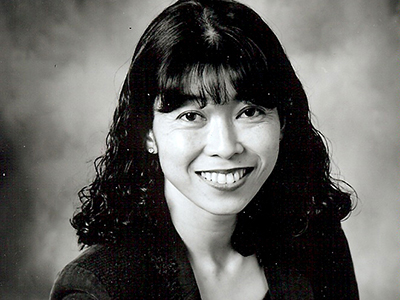Art relics have been found in remains of the earliest human civilizations—from the paintings in caves, carved stones, and clay figures, to jewelry made of beads, metals, and gemstones. Artwork may be used for practical purposes but often it’s used for pleasure, decoration, worship, or divine protection. Art objects had special meaning to those who created them and for those who viewed, touched, adored, or worshipped them. We use art to record and share precious moments of beauty and wonders of the world, to visualize dreams and ideals, and to use as a symbol of a higher power for worship, healing, and prayers. Artwork seems to be an essential element for our psyche, our heart and soul.
Modern research demonstrates art’s healing potential, but humans have long known that art has healing power. We should stay close to the healing power of art, especially in our fast-paced, computerized society, and for clinicians who struggle with demands of the healthcare system. The solutions to the often-discussed clinician burnout are multilayered, with the largest portion of the solution coming from structural and societal change at the governmental and organizational level. But we must also care for ourselves. In fact, there are stories of burned-out clinicians who attest to the fact that art kept them sane or even saved their lives when going through difficult times and in some prevented suicide.
“Art therapy” has been providing services for “people experiencing developmental, medical, educational and social or psychological impairment… those who have survived trauma resulting from combat, abuse and natural disaster…as well as individuals seeking emotional, creative, and spiritual growth,” according to the American Art Therapy Association.
Jeremy Nobel, MD, established the Foundation for Art & Healing to explore the role of creative expression in healing after 9/11, when he saw people manage and heal their emotional wounds using creative expression. (Foundation) The Foundation’s mission is to “bridge science and the arts: to explore the relationship between health and creative expression through rigorous scientific research.”
My art career begins
After working as a nurse practitioner (NP) in a multispecialty clinic and in a hospital for about 10 years, I started art school for personal enrichment. I took one online art class per semester from the Academy of Art University in San Francisco, learning new skills while enjoying the time away from clinical work. The more I painted, the more I was drawn to the world of art. I worked as a NP 4 days a week and spent as much time as I could on the weekend in my small studio that we built in the back of our house. At first, I had no intention of obtaining a degree in art, but as I continued taking “one more class” for seven and a half years, I was able to obtain a master’s degree in fine art.
As part of my graduate project, I painted a series called “Lives in Our Hands”, a series of narrative portraits of nurses, physicians, dieticians, psychologists, and other healthcare professionals. My goal was to depict the reality of healthcare world today, including faces of hard work, dedication, joy, agony, and burnout.
Art and clinician burnout
In the fall of 2017, the National Academy of Medicine (NAM) organized the Action Collaborative on Clinician Well-being and Resilience and launched its first meeting for the purpose of establishing clinician well-being as a national priority. According to the collaborative’s website, 400 physicians die by suicide each year, which is twice the rate of the general population; 24% of ICU nurses suffers from post-traumatic stress disorder; 39% of physicians are depressed; and 43% of inpatient nurses and 23-31% of primary care nurses report high level of emotional exhaustion.
In 2018, the NAM invited clinicians to submit artwork to represent “Expressions of Clinician Well-Being.” My artwork called Tough Decision (figure 1) was chosen to be one of the 30 works that represent the face of burnout. These were exhibited at the National Academy of Sciences in Washington, D.C., during a national conference.
Tough Decision depicts the inner struggle of a clinician who is trying to make a difficult clinical and moral decision for his patient. As healthcare professionals, we all have moments when we are forced to make difficult decisions that involve the patients, insurance companies, pharmacies, pharmaceutical companies, the hospital, or clinic administrators. This image seems to have struck a chord among clinicians and the image was widely shown through the NAM’s digital art gallery (http://nam.edu/expressclinicianwellbeing/#/), on Medscape, on the cover of Journal of Pain and Symptom Management, and other online and local art shows.
Two dimensions of art’s healing power
Art benefits both its creators and those who appreciate it.
Benefits for art creators
Stuckey and Nobel conducted an extensive literature review on four areas of art—music engagement, visual arts, movement, and creative writing. The potential physiological and psychological benefits of art are summarized below.
| Physiological effect | Increased or improved | Dopamine level, motor coordination, analytical skills, sleep, hemodialysis parameters, improved recovery time |
| Decreased | Heart rate, respiration rate, pain, cortisol level, cancer cell growth, fatigue, | |
| Psychological effect | Increased or improved | Sense of well-being, positive emotions, creativity, recognition of concealed emotion, expression of grief and anger, empathy, social interaction, interpersonal skills, networking, life satisfaction, flow, focus, spontaneity, positive social identity, sense of purpose, positive life experiences, self-worth, personal insight, body image, quality of life |
| Decreased | Stress, anxiety, distress, tension, negative emotions, sense of void, thoughts of illness, depression, negative mood, negative interaction, low self-esteem, crime rate, compassion fatigue, conflict |
This and related literature identify several common threads as to why art may aid the healing process.
- A form of distraction: Artmaking may help take a person’s mind off pain, discomfort, or negative thoughts and emotions, and shift the focus to positive life experiences and pleasure, relieving concerns around the source of stress. The creative process also can engage people inkinesthetic, sensory, or perceptual experiences.
- Alternate identity: Artmaking may provide a new identity aside from the already identified role (for example, nurse, patient with chronic illness) and may temporarily free one from potentially negative association (such as stress) with the existing identity.
- Social network: The creative process may nurture a new relationship with the art teacher, art therapist, classmates (who may be in similar situation), and others who appreciate art.
- Sense of control and achievement: Learning new techniques, tools, and media, and creating artwork may provide a sense of control and achievement that helps improve self-esteem and enhance self-confidence. It’s important to note that the effect seems to be positive regardless of artistic talent or prior experience.
- Symbolic expression: Some may feel uncomfortable expressing themselves verbally, and art can provide non-verbal symbolic expression of deep thoughts or emotions in a non-threatening way. However, “The visual and symbolic expression gives voice to experience and empowers individual,” according to the American Art Therapy Association.
- Brain chemical change: Artistic and creative tasks engage the right side of the brain as opposed to logical and linguistic tasks, which typically engage the left side of the brain. Research shows that art changes brain chemistry and blood flow, and it may provoke neuronal changes linked to decreased stress and anxiety.
Benefits of art appreciation
When I show my work to healthcare professionals, many say that they resonate with the people portrayed in the paintings. I hear comments such as “That’s me. I know exactly how she (or he) feels.” I believe that seeing oneself in another’s artwork can be heartwarming or, in the case of burnout, a catalyst for emotional healing. As I observe art viewers and listen to their comments, I understand the benefit to simply viewing, engaging with, and appreciating artwork. Here are some examples:
- discovering a voice in an artwork that can speak for you
- finding solace or inspiration in an artwork that you feel connected to or receive energy from
- uncovering your inner (possibly unexpressed) thoughts, feelings or emotions that you may not be aware of or not able to articulate
- being stimulated by an element in an artwork that provokes, or triggers new ideas, concepts, or point of view.
My mission
Nursing is hard work and it can be very stressful. I’m fortunate to work part-time and maintain a clinical work and artwork balance. I often joke with people that this is to balance my right and left brain. Now that I have graduated from the art academy, I call myself a professional artist. I had never dreamed of becoming a professional artist until recently, but now that I am one, I have discovered several unexpected rewards in this new world of artists:
- My new identity as an artist opened up a whole new world of opportunities, friends, artistic exploration, expressions, and community that I would have never seen otherwise.
- I simply enjoy the process of painting that makes me forget time, and I can (literally) play with new techniques, subject matter, and tools for hours on end.
- I hope to be a full-time artist when I retire from clinical work; it provides me with some income and endless fun.
- Painting gives me an opportunity to contribute to charities, organizations, galleries, and museums.
- It gives me a life-long learning challenge.
Life is art
I recommend all nurses incorporate more art in their lives, and I also recommend more action at the organizational level. For example, the hospital where I work started grand rounds called “Beyond medicine,” which introduces clinicians who engage in activities outside of nursing or medicine such as ballroom dancing, fly fishing, and singing. We also have an annual employee arts and craft fair, where hospital employees bring their creations such as paintings, photographs, jewelry, ceramics, woodwork, knitting and other treasures. These small steps provide big opportunities to engage clinicians in a world outside of medicine.
The realm of creative expression is limitless. I encourage nurses to cultivate the inner artist in whatever genre that inspires you—music, dance, theater, drawing, coloring, painting, photography, video-making, sculpture, collage, crafts, sewing, knitting, creative writing, storytelling, culinary arts, or gardening.Take time every week to be creative either by yourself or with a group (friends or classmates). Let your art be another way to communicate with others. Remember the benefits of creating art does not necessarily require talent or experience.
Don’t forget the benefits of soaking up art passively in addition to active artmaking. Take every opportunity to experience art in museums, parks, stores, or hospital hallways. Surround yourself with inspiring art, and talk to you colleagues about art. And, of course, there is nature—the natural art world around us. There is a reason that the aphorism “stop and smell the roses” resonates today. Appreciate the exquisite shape, colors, and fragrance of the rose. Life is art itself.
Edi Matsumoto is a family nurse practitioner at Community Hospital of the Monterey Peninsula, Monterey, California.You can view her hospital related artwork at edimatsumoto.com/collections/117285.
References
National Academy of Medicine. Clinician well-being knowledge hub. nam.edu/clinicianwellbeing/
National Academy of Medicine, Expressions of Clinician Well-Being, An Art Exhibition. September 27, 2019. nam.edu/expressclinicianwellbeing/#/
Matsumoto E. Tough decision (cover image). J Pain Symptom Manage. 2019;57(3).
American Art Therapy Association, What is art therapy? 2013.arttherapy.org/upload/whatisarttherapy.pdf
The Foundation for Art & Healing. Founder profile. September 26th, 2016. artandhealing.org/wp-content/uploads/2016/10/FAH_Founder_Profile-v2.pdf
Stuckey H, Nobel J. The connection between art, healing, and public health: A review of current literature.Am J Public Health. 2010;100(2):254-63.
Cancer Research UK. Together we will beat cancer.cancerresearchuk.org/about-cancer/cancer-in-general/treatment/complementary-alternative-therapies/individual-therapies/art-therapy
Kaimal G, Ray K, Muniz J. Reduction of cortisol levels and participants’ responses following art making. Art Ther. 2016;2;33(2):74-80. ncbi.nlm.nih.gov/pmc/articles/PMC5004743/
Monti D, Meditation combined with art therapy can change your brain and lower anxiety. 2012.


















